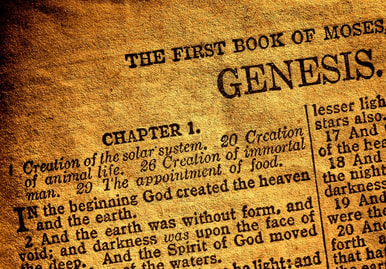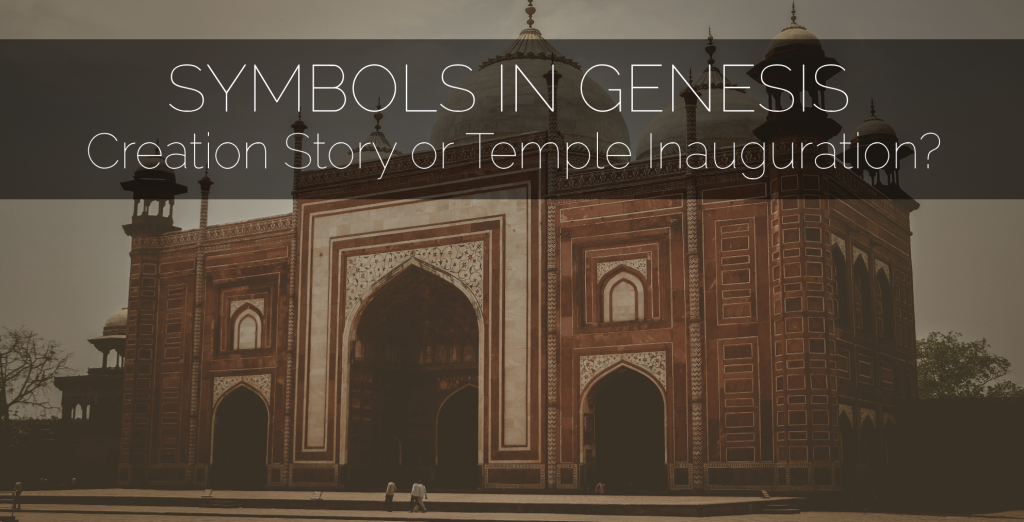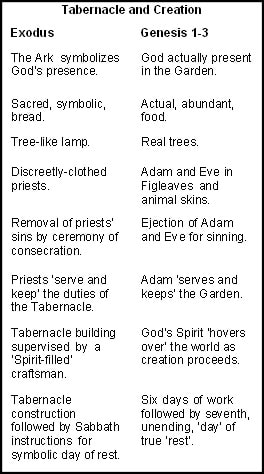
We want to know when the universe was created. We want to know how long it took. But what if we are missing the point? What if we are asking questions of the text that the author did not care to answer? To be respectful of the author, we must first explore why the writer wrote the short creation epic before we can figure out what questions the text answers.
The short creation epic of Genesis 1 is structured around 6 days of creating and 1 day of divine rest. The 7-day sequence from Genesis 1:1-2:3 gives us a big hint about the author’s reason for recording God’s creative activity. The point wasn’t to communicate a chronological timeline but rather to reveal the theological purpose behind the world humanity inhabits.
You might think we shouldn’t make too much out of the sevenfold structure of the creation epic. But the literary structure tells us otherwise. As Gordon J. Wenham observes in his commentary on Genesis 1-15, the entire passage is packed full of sevenfold language. Genesis 1:1 has seven words. Genesis 1:2 has 14 words (7x2). References to the earth and heavens/firmament appear 21 times each (7x3), God’s name appears 35 times (7x5), and the climactic phrase “God saw that it was good” appears 7 times. So an informed Hebrew reader is told at every turn to pay attention to the sevenfold (or heptadic) structure.
But we can’t just take the number 7 and start guessing about its generic meanings of perfection, wholeness, or completeness. We need to combine this dominant numerical structure with the story’s specific content.
|
In the Ancient Near East, we have many other stories about 7-day construction projects. Those stories are about building temples. The parallel biblical accounts are the 7-day consecration of the Tabernacle in Exodus 39-40 and the 7-year construction of Jerusalem’s temple under king Solomon (see 1 Kings 6:38). Outside the Bible, the Sumerian Gudea Cylinders recount the construction of a Temple that ended in a 7-day consecration ceremony (Gudea Cylinder B xvii 18-19). All these temple building projects include divine instructions and blessings just like the creation epic of genesis 1:1-2:3.
What do the structural parallels between the creation epic and temple-building tell us about Genesis 1? God wasn’t just building a universe. He was building a place to dwell. He walked around the garden of Eden in Genesis 2 just like he walked around (Hebrew hlk) the Tabernacle and Temple. And the people in all those divine dwellings were placed there to worship him. |
|
|
The Cosmic Temple
The instructions given to Adam in the Garden after the world (or cosmic Temple) is created are to work (Hebrew šmr) and to keep (Hebrew ‘bd) the land. As Jeff Morrow observed in “Creation as Temple-Building and Work as Liturgy in Genesis 1-3”, “šmr and ‘bd only occur together again in the Pentateuch in the descriptions in Numbers for the Levites’ activities in the tabernacle.” The Levites were appointed to serve God in the Temple. Their role was to help people worship the one true God. Adam’s instructions were the same. Humanity’s purpose is to worship God in the place where God dwells. The structural and grammatical pointers lead Scott Hahn to define humanity as Homo liturgicus—we are beings for worship (Scott W. Hahn, “Worship in the Word: Toward a Liturgical Hermeneutic,” Letter & Spirit 1 [2005]: 106). We were created to honor God in the cosmic Temple he built. Prophets like Ezekiel associated the Temple with creation (Ezekiel 28), and non-canonical Jewish writings like Sirach (Sirach 24) made the same connection. Jesus himself referred to Jerusalem’s Temple as “heaven and earth” just like the prophet Isaiah score him (Isaiah 65:17-18). The Tabernacle and Temple were microcosms of God’s original dream for the whole world to be where he walked among his worshippers. |
Parallels go beyond Genesis One into the Garden of Eden and events in Genesis 2-3
|
Genesis 1 doesn’t tell us how long it took for God to create the universe; it tells us why God created the universe and what our purpose is in it. The author wasn’t concerned with scientific questions, but with theological ones. The question we should ask about Genesis 1 is: Why were we created? What is our intended purpose in the world?
It is much easier to debate the chronology of the cosmos than to assess whether we have or have not honored God is his cosmic Temple. We would rather talk about the definition of “days” than discuss our devotion. We would rather argue about the timeline of our origins than honor our originator. But if you want to respect the author of Genesis 1, then it is time to evaluate your reverence for the God who walks among us. We are here to honor the God who made us in the way we live upon the land. He did everything so we could thrive on this planet; now it is time for us to go about our business in a way that embodies his goal of a global family upholding justice, caring for one another, and enjoying this amazing temple. That is our act of worship.
NOTE: I am indebted to the compilation of relevant ANE sources and Hebrew grammar analysis in Morrow’s “Creation as Temple-Building and Work as Liturgy in Genesis 1-3








 RSS Feed
RSS Feed
